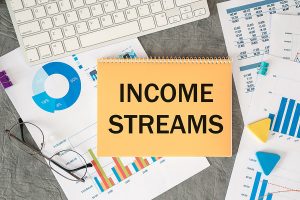
The next step in your financial preparation for your journey is to understand how much you are spending each month and how much you are generating in income each month. It goes without saying that saving money when you are spending more than you are earning is extremely difficult. This process is going to be one of the most difficult because it’s going to take you face to face with what you are actually spending and bring you to the reality of the difficult choices you are going to need to make.
ASSETS VS. LIABILITIES
The Basics part of this blog is an introduction to finances that will include words and definitions you absolutely need to know. The first two big financial concepts are Assets and Liabilities and the definitions are pretty straight forward:
- Assets are things the generate money
- Liabilities are debts and things that cost money
That seems pretty simple doesn’t it? So what are examples of assets?
- You (assuming you have a job). Yes, you are an asset and you generate money for yourself and/or your family
- Stocks and Bonds. Stocks in companies especially ones that generate dividends are assets. Stocks can increase in value and generate money from dividends
- Investment Real Estate. A home that you purchase for purposes of renting out and that generates more money in rent than it costs is considered an asset
- A Business. If you own a business and people work for you and the business brings in more money than it costs to run, it’s an asset
All of the above examples are considered assets because they generate money coming in each month. So, what are examples of liabilities?
- Credit cards. Credit cards provide a way for you to borrow money to pay for items. If you don’t pay off your credit cards, you are getting charged, in many cases, 17% – 25% in interest. That is a lot of money and your balance on your credit cards is considered DEBT or a liability
- Your primary home. While you might consider a home an asset, if you are spending money on a mortgage every month, it is considered a liability. You have a DEBT you have to pay every month. This is not to say you shouldn’t own a home or purchase a home. There are many tax benefits of owning a home and the value will increase over time. However, this is an example of a liability because it costs you money. That said, if you rented out a room and/or constructed an add-on granny flat (Accessory Dwelling Unit – ADU) in your backyard and rented that out to someone, it could turn your liability into an asset
- Car loan. Your debt that you owe on a car and your monthly payment is a liability
- Any other loan. If you like to purchase toys like boats or trailers or other items like payment plans for braces, furniture or pelotons, these are all liabilities
- School loans. This is a debt you owe and considered a negative with a monthly payment
- Monthly subscriptions – this is a big one people get caught in. Many companies realized they could get a lot more customers by providing very low monthly payments for products or services. In many cases, people don’t even realize how many subscriptions they have
In the examples above you can have liabilities that can turn into assets. For instance, if you purchase a boat and owe $300/month in payments, but you rent that boat out when you’re not using it and you receive $400/month in income, that liability becomes an asset. You would need to factor in the repairs as an expense since more people are using the boat but again, if the rental money you receive per month is more than loan payment plus the repairs, you’ve got an asset.
CASHFLOW VS. WEALTH
Like I mentioned, it is vital that you understand your current starting point and your net worth, but understanding your cashflow is just as important. Your net worth is the amount of money you are worth at any given time. Your cashflow is your monthly income minus your expenses and allows you to determine how much you have to spend or save. The more expenses you cut out, the more you have to save toward your goal. Conversely, the more money you earn, the more you can save (assuming your expenses don’t go up). This is the hard part for many people. If they get a raise or a bonus, the first thing people think about is “what can I buy with this new found dineiro???” For a millionaire, you have a couple of choices:
- Spend it all
- Spend some and save some
- Save it all
To be honest, I’m a #2 kind of guy. If I get a big bonus or raise, I will buy something small as a reward and save the rest. Again, this is new found money. You were doing just fine before the money came in and if you put it all in savings, it wouldn’t change your life today, BUT it will add to the steps up the mountain on your expedition. The more you put away, the faster you can reach the pinnacle. Because I am a #2 type of guy, my journey might take longer than the FIRE people who put 70% or 80% of their income away.
Throughout this process, the goal is to figure out how to both increase your monthly income AND decrease your monthly expenses. The point of this post is to understand where you are at today to get started.
TOOLS YOU CAN USE
In order to determine your monthly cashflow, there are quite a few tools you can use. The following will give you a start on how to determine your monthly expenses and your income.
- TD Ameritrade Cashflow Calculator: Click Here
- How Stuff Work Cashflow Calculator: Click Here
As you can imagine, these tools require a lot of numbers. Many of these should be easy to input like your monthly rent or mortgage, your income from your job or easy monthly expenses like childcare or your phone bills. The harder numbers are going to be things like travel, shopping and miscellaneous expenses. This is where people start getting a little confused and disillusioned with this process. To make this part easier, I recommend the following:
- You don’t need the exact numbers for every one of the categories but you really do need some idea of what you are spending
- I recommend using one credit card is possible for all of your transactions
- If you are using Mint.com, it will pull in all of your credit card transactions and automatically assign them to categories. All you have to do is go through the transactions and make sure the transactions are in the right categories. Once you are done and the transactions are in the right place, Mint.com will give you summary reports of every category of spending and how much you spend each month
- This could take a little time, but I recommend you do the categorization for at least the last 9 months. When you take all of the categories and spending and average it out, you will get a great picture of what you spend.
By the end of this exercise, you will have completed the preparation phase for your expedition!






